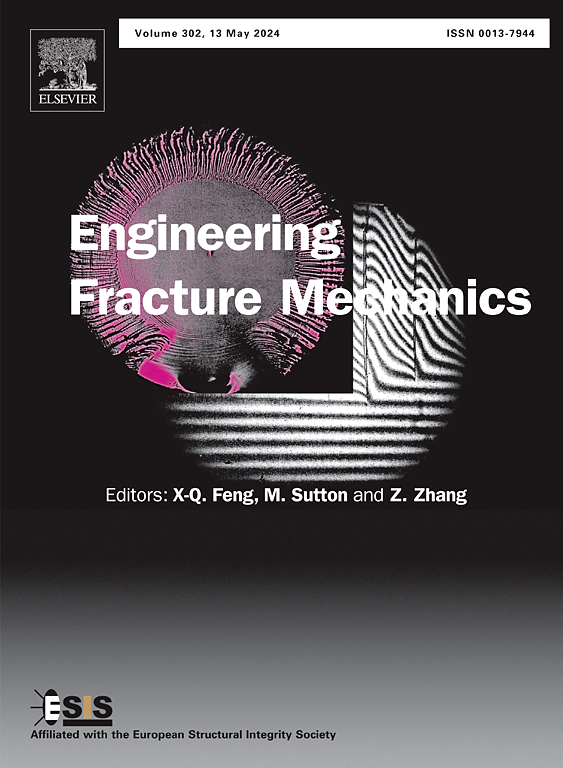将人工智能与不同的塑性诱导裂纹闭合标准相结合,确定三维中心开裂试样的开裂和闭合载荷
IF 4.7
2区 工程技术
Q1 MECHANICS
引用次数: 0
摘要
疲劳裂纹增长导致的断裂仍然是脆性和韧性材料的重要失效模式。在处理以高应变和应力场梯度为特征的裂纹尖端塑性诱导现象时,只有裂纹尖端周围高度精细的网格才能产生精确的结果。因此,必须使用优化的网格参数,才能以较低的计算成本获得高质量的模型。在本研究中,人工智能模型与中间拉伸试样的三维数值模型相结合,增强了裂纹闭合和张开载荷的评估。根据估算的应力场和应变场、塑性区形状和大小以及裂缝闭合和打开载荷值,对数值精度进行了分析。使用四种不同的裂纹长度、网格尺寸和模拟塑性波浪训练了两个人工神经网络。这些网络能够预测应力场和应变场,并确定裂缝开裂和闭合荷载。经验证,裂纹应力标准与裂纹尖端周围的主应变场和位移场密切相关,为分析塑性诱导的裂纹闭合提供了一种可行的方法。本文章由计算机程序翻译,如有差异,请以英文原文为准。
Combining artificial intelligence with different plasticity induced crack closure criteria to determine opening and closing loads on a three-dimensional centre cracked specimen
Fracture due to fatigue crack growth remains a significant failure mode in both brittle and ductile materials. When dealing with crack tip plasticity induced phenomena, characterized by high strain and stress field gradients, only highly refined meshes around the crack tip can produce accurate results. Therefore, optimized mesh parameters must be used, in order to achieve high quality models with low computational costs. In this study, artificial intelligence models and a numerical three-dimensional model for a middle tension specimen were combined to enhance crack closure and opening loads assessment. The numerical accuracy was analysed based on the estimated stress and strain fields, plastic zone shape and size and crack closure and opening load values. Two artificial neural networks were trained using four different crack lengths, mesh sizes and simulated plastic wakes. The networks were capable of stress and strain field predictions and crack opening and closure load determination. It was verified that the crack stress criterion is strongly correlated with the principal strain field and the displacement field around the crack tip, providing a viable way to analyse plasticity induced crack closure.
求助全文
通过发布文献求助,成功后即可免费获取论文全文。
去求助
来源期刊
CiteScore
8.70
自引率
13.00%
发文量
606
审稿时长
74 days
期刊介绍:
EFM covers a broad range of topics in fracture mechanics to be of interest and use to both researchers and practitioners. Contributions are welcome which address the fracture behavior of conventional engineering material systems as well as newly emerging material systems. Contributions on developments in the areas of mechanics and materials science strongly related to fracture mechanics are also welcome. Papers on fatigue are welcome if they treat the fatigue process using the methods of fracture mechanics.

 求助内容:
求助内容: 应助结果提醒方式:
应助结果提醒方式:


